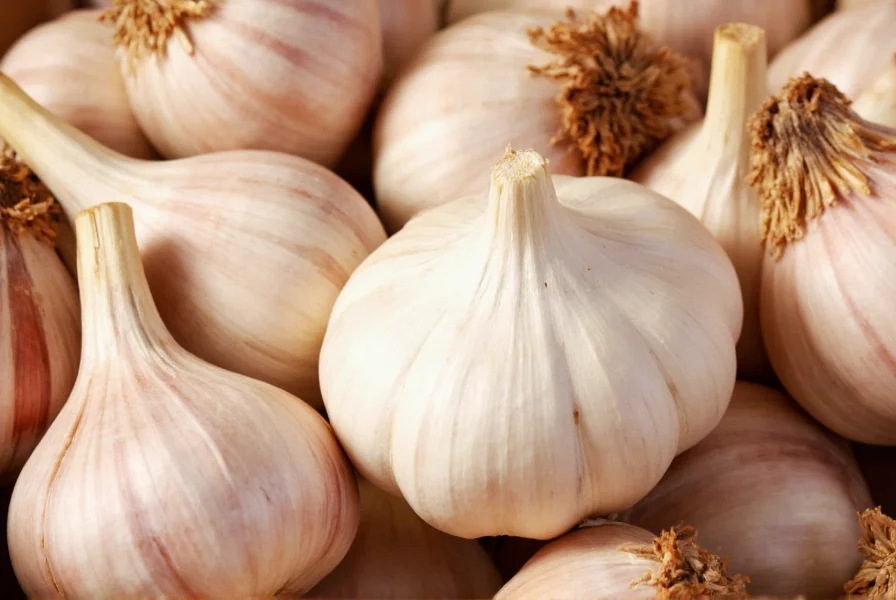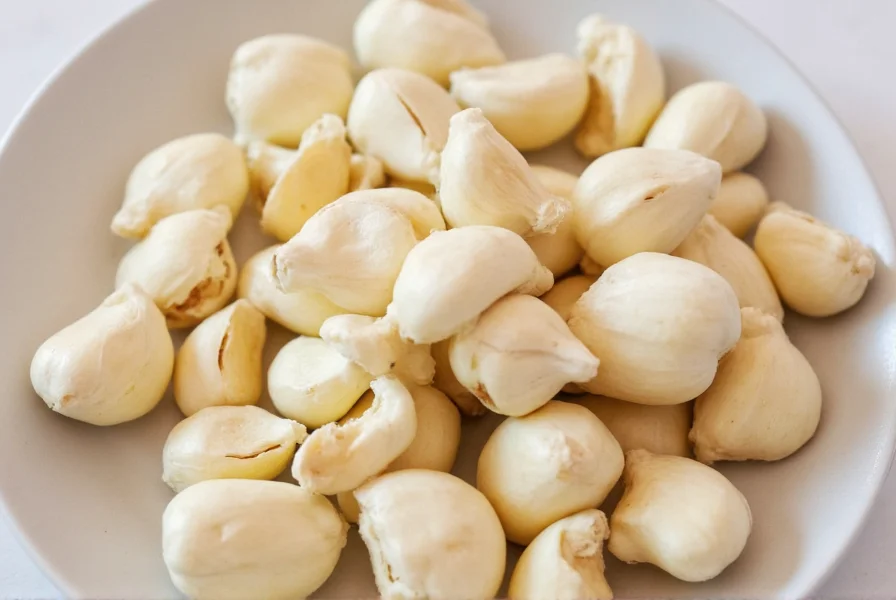For centuries, garlic has been valued not just as a culinary staple but as a medicinal plant. Modern science continues to validate many traditional uses while uncovering new potential health applications. This comprehensive guide examines the evidence-based benefits of garlic cloves, focusing on what research actually supports and how to maximize these benefits in your daily life.
The Science Behind Garlic's Healing Properties
When you crush or chop a garlic clove, an enzyme called alliinase converts alliin into allicin—the compound primarily responsible for garlic's distinctive smell and many health benefits. Allicin is unstable and quickly breaks down into other sulfur-containing compounds that provide therapeutic effects.
Research shows these compounds work through multiple mechanisms:
- Antioxidant activity that combats oxidative stress
- Anti-inflammatory properties that reduce chronic inflammation
- Antimicrobial effects against bacteria, viruses, and fungi
- Modulation of enzyme activity involved in disease processes

Top 7 Evidence-Based Health Benefits of Garlic Cloves
1. Cardiovascular Protection
Multiple studies confirm garlic's positive impact on heart health. A comprehensive review published in Antioxidants (2020) found that aged garlic extract significantly reduced soft plaque in coronary arteries. Regular consumption of 600-900 mg of garlic extract (equivalent to about 1-2 cloves daily) demonstrated:
- 5-10% reduction in total cholesterol levels
- 5-15% decrease in blood pressure among hypertensive individuals
- Improved arterial stiffness and endothelial function
2. Immune System Support
Garlic enhances immune cell function and may reduce the frequency and severity of common illnesses. A clinical trial in Clinical Nutrition showed that daily garlic supplementation reduced the incidence of colds by 63% compared to placebo. The study also found that when participants did get sick, symptoms resolved significantly faster—averaging 1.52 days versus 4.93 days in the placebo group.
3. Potential Anti-Cancer Properties
Population studies suggest an inverse relationship between garlic consumption and certain cancer risks. Research published in American Journal of Clinical Nutrition found that higher garlic intake correlated with a 30% lower risk of colorectal cancer and up to 50% lower risk of stomach cancer. Laboratory studies show garlic compounds can inhibit tumor cell proliferation and induce apoptosis (programmed cell death) in cancer cells.
| Method of Consumption | Allicin Availability | Key Benefits | Best For |
|---|---|---|---|
| Raw, crushed & consumed immediately | High (100%) | Maximum antimicrobial, immune support | Preventing illness, immune boosting |
| Raw, crushed & allowed to sit 10 minutes before eating | Optimal (peak allicin formation) | Maximum cardiovascular benefits | Blood pressure management |
| Cooked immediately after chopping | Low (10-30%) | Mild flavor, some benefits retained | Regular culinary use |
| Cooked after 10-minute rest period | Moderate (40-60%) | Balanced flavor and benefits | Daily therapeutic consumption |
| Aged garlic extract (supplement) | Negligible (converted to stable compounds) | Cardiovascular protection, reduced odor | Those seeking consistent daily benefits |
4. Blood Sugar Regulation
Emerging research suggests garlic may help regulate blood glucose levels. A meta-analysis in Nutrition Research Reviews concluded that garlic supplementation significantly reduced fasting blood glucose levels in people with type 2 diabetes. The mechanism appears to involve enhanced insulin sensitivity and protection of pancreatic beta cells.
5. Antimicrobial and Antifungal Properties
Garlic's broad-spectrum antimicrobial activity has been documented since ancient times and confirmed by modern research. Studies show effectiveness against antibiotic-resistant bacteria including MRSA, as well as various fungi and parasites. The compound ajoene demonstrates particular promise against fungal infections like Candida.
6. Bone Health Support
Preliminary research indicates garlic may help maintain bone density. A study in Journal of Medicinal Food found that garlic oil supplementation prevented estrogen deficiency-induced bone loss in laboratory models. While human studies are limited, population research shows women who consume garlic and other allium vegetables regularly have higher bone mineral density.
7. Cognitive Protection
The antioxidant and anti-inflammatory properties of garlic compounds may protect against neurodegenerative diseases. Research in Experimental and Therapeutic Medicine suggests aged garlic extract reduces oxidative stress in brain tissue and may slow cognitive decline. Population studies show higher garlic consumption correlates with lower risk of dementia and Alzheimer's disease.
How to Maximize Garlic's Health Benefits
To get the most therapeutic value from garlic cloves:
- Crush or chop before consumption - This activates the alliinase enzyme
- Wait 10 minutes - Allows maximum allicin formation before cooking or eating
- Avoid high-heat cooking immediately - Heat destroys alliinase enzyme
- Combine with lemon or vinegar - Acidic environments stabilize allicin
- Consume with food - Reduces gastrointestinal side effects while maintaining benefits

Potential Side Effects and Considerations
While generally safe, garlic consumption may cause:
| Side Effect | Frequency | Prevention/Treatment | When to Consult Doctor |
|---|---|---|---|
| Bad breath and body odor | Very common | Milk, parsley, chlorophyll supplements | Not typically concerning |
| Heartburn or digestive upset | Common with raw garlic | Consume with food, reduce amount | Persistent symptoms |
| Bleeding risk | Rare at dietary levels | Avoid high doses before surgery | Before dental/surgical procedures |
| Skin irritation (topical) | Occasional | Dilute with carrier oil, patch test | Severe reactions |
| Drug interactions | Specific medications | Consult doctor if on blood thinners | Before starting high-dose supplementation |
Individuals taking blood thinners, scheduled for surgery, or with bleeding disorders should consult their healthcare provider before significantly increasing garlic consumption. Pregnant and breastfeeding women can safely consume garlic in normal food amounts but should avoid high-dose supplementation without medical guidance.
Practical Recommendations for Daily Use
For general health maintenance, incorporating 1-2 raw or cooked garlic cloves daily provides significant benefits without excessive side effects. Those seeking therapeutic effects for specific conditions might consider:
- For cardiovascular support: 600-900 mg aged garlic extract daily or 2-3 cloves prepared properly
- For immune support: 1 raw clove daily during cold and flu season
- For digestive health: 1 clove with meals to support gut microbiome
Remember that garlic works best as part of a balanced, varied diet rich in fruits, vegetables, and whole grains—not as a standalone miracle cure. Consistency matters more than large occasional doses; regular moderate consumption delivers the most sustainable benefits.
Frequently Asked Questions
What is the most effective way to consume garlic for maximum health benefits?
The most effective method is to crush or chop a fresh garlic clove and let it sit for 10 minutes before consuming. This allows maximum allicin formation. Consuming it raw preserves the highest concentration of active compounds, though mixing with lemon juice or vinegar can help stabilize the beneficial compounds if you prefer to cook it.
How many garlic cloves should I eat per day for health benefits?
For general health maintenance, 1-2 cloves daily provides significant benefits. Those seeking therapeutic effects for specific conditions might consume 2-3 cloves daily, properly prepared. Research suggests 600-900 mg of garlic extract (equivalent to about 2-3 cloves) is effective for cardiovascular benefits. Consuming more than 5 cloves daily may increase the risk of side effects without providing additional benefits.
Does cooking garlic destroy its health benefits?
Cooking immediately after chopping significantly reduces allicin formation. However, if you crush garlic and let it sit for 10 minutes before cooking, you preserve 60-70% of the beneficial compounds. Lower cooking temperatures and shorter cooking times also help preserve more active compounds. While raw garlic provides the highest concentration of allicin, properly prepared cooked garlic still offers substantial health benefits.
Can garlic help lower high blood pressure?
Yes, multiple studies confirm garlic's blood pressure-lowering effects, particularly for those with hypertension. Research shows aged garlic extract (600-900 mg daily) can reduce systolic blood pressure by 5-10 mmHg and diastolic by 3-7 mmHg. The effect typically becomes noticeable after 2-3 months of consistent use. Garlic works best as part of a comprehensive approach to blood pressure management that includes diet, exercise, and stress reduction.











 浙公网安备
33010002000092号
浙公网安备
33010002000092号 浙B2-20120091-4
浙B2-20120091-4